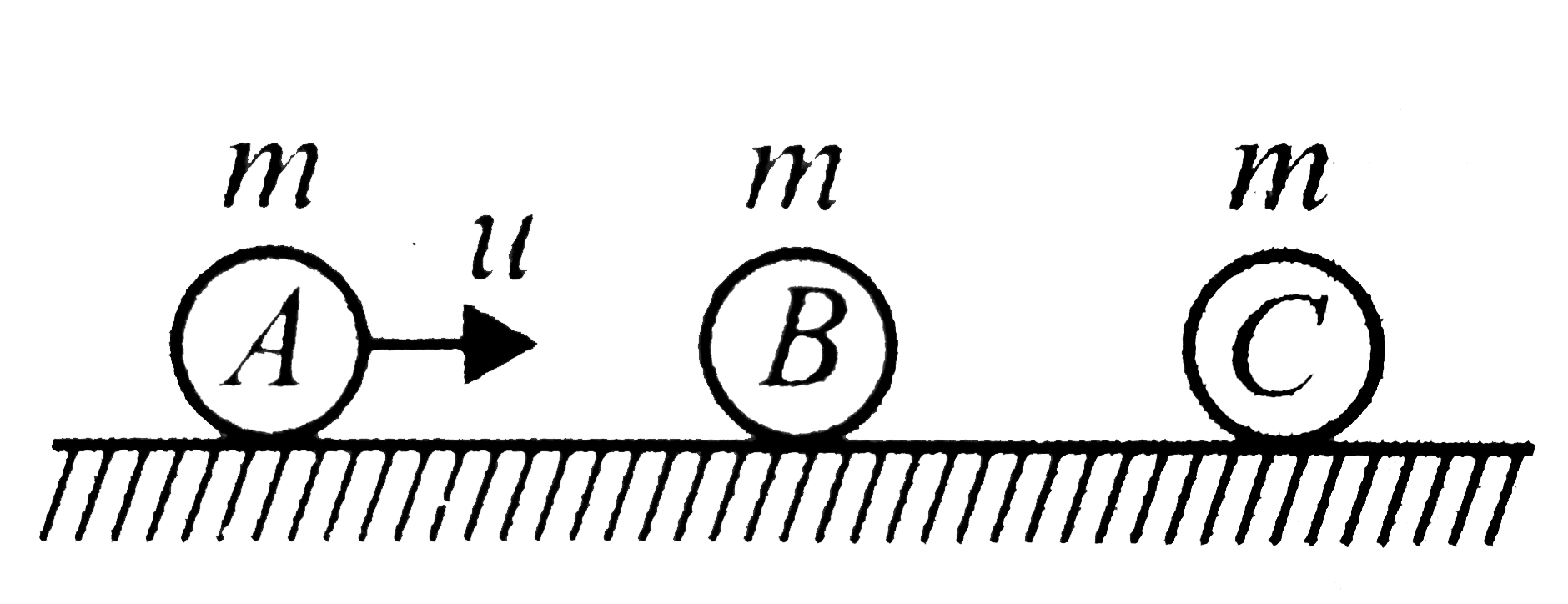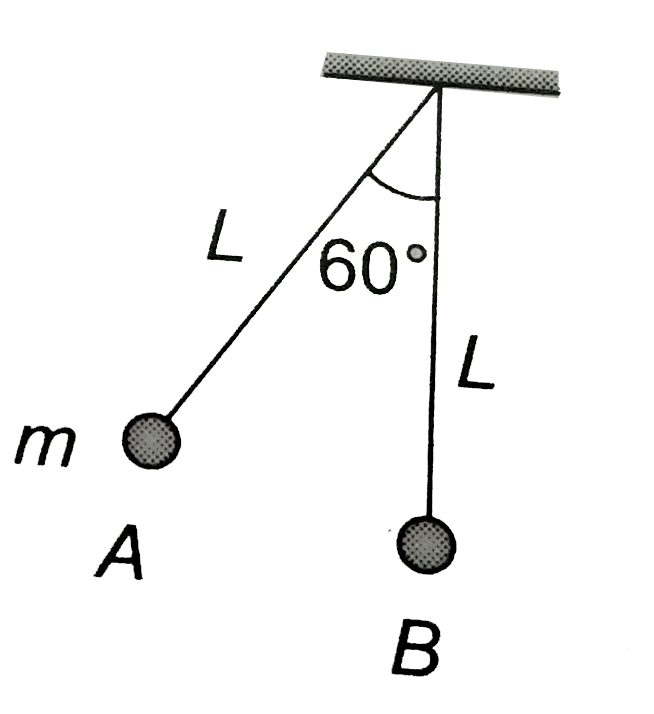A ball A of mass 10kg and a ball B of unknown mass are placed on a horizontal frictionless table which rest against a rigid wall as shown in figure-4.135. The hail A moves towards the ball B with a velocity v.What should be the mass of B such that both A and B move with the same speed after A has undergone a collision with ball B and the wall ? All collisions are assumed to the elastic.

The correct Answer is:[30kg]
Step by step video, text & image solution for A ball A of mass 10kg and a ball B of unknown mass are placed on a horizontal frictionless table which rest against a rigid wall as shown in figure-4.135. The hail A moves towards the ball B with a velocity v.What should be the mass of B such that both A and B move with the same speed after A has undergone a collision with ball B and the wall ? All collisions are assumed to the elastic. by Physics experts to help you in doubts & scoring excellent marks in Class 11 exams.
Updated on:21/07/2023Topper's Solved these Questions
- LINEAR MOMENTUM & ITS CONSERVATIONBOOK - PHYSICS GALAXY - ASHISH ARORACHAPTER - LINEAR MOMENTUM & ITS CONSERVATIONEXERCISE - exercise 1.3
3 Videos
- LINEAR MOMENTUM & ITS CONSERVATIONBOOK - PHYSICS GALAXY - ASHISH ARORACHAPTER - LINEAR MOMENTUM & ITS CONSERVATIONEXERCISE - Advance McQ
20 Videos
- KINEMATICSBOOK - PHYSICS GALAXY - ASHISH ARORACHAPTER - KINEMATICSEXERCISE - Unsolved Numerical Pro.
83 Videos
- NEWTONS LAWS OF MOTIONBOOK - PHYSICS GALAXY - ASHISH ARORACHAPTER - NEWTONS LAWS OF MOTIONEXERCISE - Unsolved Numerical Problem
81 Videos
Similar Questions
Three balls A,B and C of same mass m are placed on a frictionless horizontal plane in a straight line as shown. Ball A is moved with velocity u towards the middle ball B. If all the collisions are elastic, find the final velocities of all the balls.

View SolutionA ball of mass m moving with velocity v collides head on elastically with another identical ball moving with velocity - V. After collision
View Solution
Knowledge Check
The ball A is reached and it makes head on collision with B. The masses of A and B are same
 AAfter collision , A comes to rest and B moves with velocity of A just before collisionBThe maximum height attained by ball BisL/2CThe maximum angle made by string attached to Bis60∘DAll options are correct
AAfter collision , A comes to rest and B moves with velocity of A just before collisionBThe maximum height attained by ball BisL/2CThe maximum angle made by string attached to Bis60∘DAll options are correctA ball of mass 'm' strikes a rigid wall with speed 'u' and rebounds with the same speed. The impulse imparted to the ball by the wall is
A2 mu,Bmu,CzeroD−2mnA ball of mass m moves with speed v and stricks a wall having infinite mass and it returns with same speed then the work done by the ball on the wall is
AZeroBmvjoe–sCm/vjoe–sDv/mjoe–s
A ball A of mass 0.2 strikes another ball B of unknown mass at rest . If the ball A makes an elastic head on collision and then rebounds at one half of its original speed , then calculate the mass of ball B .
View SolutionBall of mass 5.0 kilograms moving at 20m/s collides with ball B of unknown mass moving at 10m/s in the same direction . After collision ball A moves at 10m/s an ball B at 15m/s , both still in the same direction. What is the mass of ball B?
View SolutionA body of mass m collides against a wall with the velocity v and rebounds with the same speed. Its magnitude of change of momentum is
View SolutionTwo identical balls, of equal masses A and B, are lying on a smooth surface as shown in Fig. Ball A hits ball B (which is at rest) with a velocity v=16m/s. What should be the minimum value of coefficient of restitution between A and B so that B just reaches the highest point of inclined plane?

View SolutionA ball of mass M moving with a velocity v collides perfectly inelastically with another ball of same mass but moving with a velocity v in the opposite direction. After collision
View Solution
